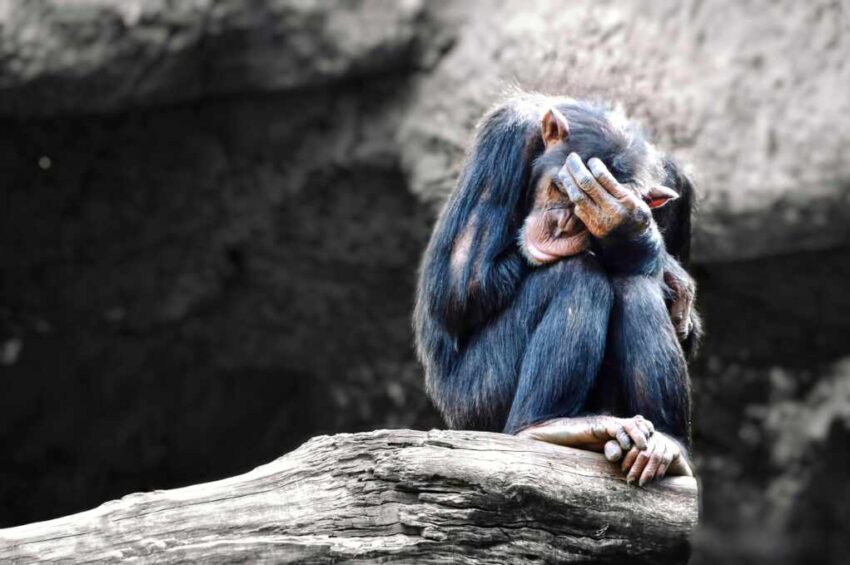Imagine a sacred temple where the most cunning pickpockets have fur and tails, and the only way to get your phone back is to bribe a monkey with a banana. You can’t make this up, and at Bali’s Uluwatu Temple, the long-tailed macaques have turned tourist theft into an art form so sophisticated, it would make Ocean’s Eleven blush.
At a Glance
- Uluwatu Temple’s monkeys systematically steal valuables and barter them for food.
- The behavior has persisted and evolved over decades, baffling tourists and scientists alike.
- Macaques distinguish between high- and low-value items and negotiate accordingly.
- The temple handlers have become professional negotiators in a daily “hostage exchange.”
How Monkeys Became the Temple’s Most Notorious Con Artists
Bali’s Uluwatu Temple is perched dramatically on a cliff, overlooking the Indian Ocean and centuries of spiritual history. But the real spectacle for today’s visitor is not the ancient stonework—it’s the local macaques, who have mastered the art of the stickup. These monkeys don’t simply snatch your snacks. They’re after your phone, your sunglasses, and if you’re distracted, even your dignity. Once a macaque gets its nimble paws on your valuables, you’re entering a primate-run negotiation that makes pawn shop haggling look polite.
I fell victim to a scam operation targeting tourists—run by monkeys.
For decades, long-tailed macaques at a temple in Bali snatch belongings from tourists to barter for food. Some, as I found out, also steal for fun.
Read more about the monkey business in my latest A-hed
pic.twitter.com/veIs7Smxr3
— Hannah Miao (@hannahmiao_) July 29, 2025
The roots of this furry crime syndicate stretch back decades. Tourists used to feed the monkeys freely, a well-intentioned gesture that only emboldened their opportunism. When temple management cut off the snack supply, the macaques didn’t go hungry—they got creative. They began swiping personal items, then holding them “hostage” in exchange for food. This system has become so entrenched that the temple now employs handlers whose sole job is to mediate these furry hostage crises. Forget sacred relics; the real treasures are your Ray-Bans, and the price is a handful of peanuts.
The Science Behind the Simian Shakedown
Primate researchers from the University of Liège and University of Lethbridge have spent years studying the Uluwatu scam, and they’re as impressed as they are perplexed. The macaques aren’t just random thieves; they’re savvy economists. They evaluate the worth of what they steal—phones and wallets are held for higher ransom than cheap hair ties. This isn’t instinct; it’s learned, culturally transmitted behavior. Younger monkeys watch, learn, and perfect the art of the swipe-and-barter under the tutelage of older, more seasoned larcenists.
Unlike their cousins elsewhere, the Uluwatu macaques have developed a unique micro-economy, complete with negotiation tactics and a clear understanding of supply and demand. Researchers describe this as one of the rarest examples of non-human animals engaging in bartering and value assessment. Other monkey populations in equally tourist-heavy spots haven’t adopted this level of criminal sophistication, which suggests that the Uluwatu crew are either uniquely clever—or simply have better teachers.
The Human Cost: Frustration, Farce, and the Rise of the Monkey Handler
Every week, Uluwatu’s monkeys relieve tourists of dozens of valuables—up to 5–10 smartphones daily. Temple handlers, known locally as “pawang,” spring into action, negotiating the return of each item with a carefully rationed offering of food. If you’re lucky, one snack is enough. If you’re not, the monkey might demand several courses before releasing your device. Tourists often leave with their belongings (and pride) battered, but with a story to dine out on for years.
Handlers have become minor celebrities, celebrated for their patience and bargaining skills. Their job is as much performance art as animal management. But their efforts haven’t curbed the thefts; the monkeys adapt faster than any policy change. Attempts to alter feeding schedules or introduce new deterrents have failed, and the bartering enterprise continues unabated. Tourists, meanwhile, alternate between awe, irritation, and the sense that they’ve stumbled into a live-action animal heist movie.
The Bigger Picture: What the Monkey Mafia Teaches Us About Ourselves
The Uluwatu macaques are more than a tourist nuisance; they’re a living case study in animal intelligence, social learning, and the unintended consequences of human meddling. Their behavior challenges the idea that only humans can create “culture” or engage in economic negotiation. It also offers a cautionary tale about the ripple effects of tourism. Every time a tourist barters a snack for their phone, the cycle deepens, and the monkeys’ cultural tradition grows stronger.
The temple’s management faces a conundrum: tourism pays the bills, but the monkeys run the show. Researchers continue to monitor the situation, wary that these skills might spread to other monkey populations. For now, the Uluwatu macaques remain the undisputed masters of their cliffside kingdom—a place where the line between sacred guardian and streetwise hustler is as thin as a stolen selfie stick.
Click this link for the original source of this article.
Author: Editor
This content is courtesy of, and owned and copyrighted by, https://republicanpost.net and its author. This content is made available by use of the public RSS feed offered by the host site and is used for educational purposes only. If you are the author or represent the host site and would like this content removed now and in the future, please contact USSANews.com using the email address in the Contact page found in the website menu.





